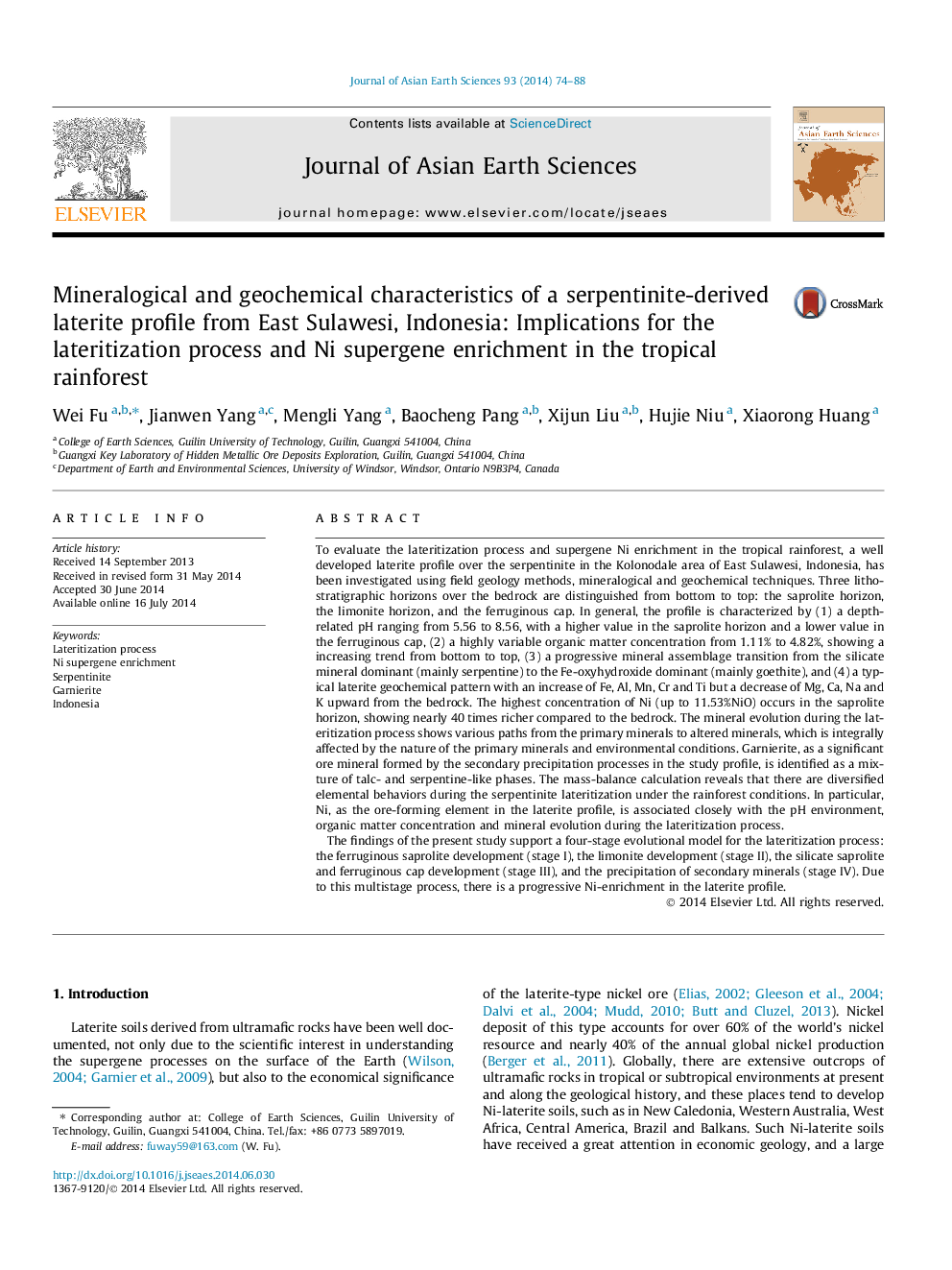| کد مقاله | کد نشریه | سال انتشار | مقاله انگلیسی | نسخه تمام متن |
|---|---|---|---|---|
| 4730722 | 1640375 | 2014 | 15 صفحه PDF | دانلود رایگان |
• Indonesia has some of the world’s largest Ni-laterite deposits.
• Formation of garnierite is influenced greatly by variable environmental factors.
• Ni supergene behavior is related with pH, organic matter and weathered minerals.
• Lateritization process of serpentinite may have undergone a four-stage evolution.
To evaluate the lateritization process and supergene Ni enrichment in the tropical rainforest, a well developed laterite profile over the serpentinite in the Kolonodale area of East Sulawesi, Indonesia, has been investigated using field geology methods, mineralogical and geochemical techniques. Three lithostratigraphic horizons over the bedrock are distinguished from bottom to top: the saprolite horizon, the limonite horizon, and the ferruginous cap. In general, the profile is characterized by (1) a depth-related pH ranging from 5.56 to 8.56, with a higher value in the saprolite horizon and a lower value in the ferruginous cap, (2) a highly variable organic matter concentration from 1.11% to 4.82%, showing a increasing trend from bottom to top, (3) a progressive mineral assemblage transition from the silicate mineral dominant (mainly serpentine) to the Fe-oxyhydroxide dominant (mainly goethite), and (4) a typical laterite geochemical pattern with an increase of Fe, Al, Mn, Cr and Ti but a decrease of Mg, Ca, Na and K upward from the bedrock. The highest concentration of Ni (up to 11.53%NiO) occurs in the saprolite horizon, showing nearly 40 times richer compared to the bedrock. The mineral evolution during the lateritization process shows various paths from the primary minerals to altered minerals, which is integrally affected by the nature of the primary minerals and environmental conditions. Garnierite, as a significant ore mineral formed by the secondary precipitation processes in the study profile, is identified as a mixture of talc- and serpentine-like phases. The mass-balance calculation reveals that there are diversified elemental behaviors during the serpentinite lateritization under the rainforest conditions. In particular, Ni, as the ore-forming element in the laterite profile, is associated closely with the pH environment, organic matter concentration and mineral evolution during the lateritization process.The findings of the present study support a four-stage evolutional model for the lateritization process: the ferruginous saprolite development (stage I), the limonite development (stage II), the silicate saprolite and ferruginous cap development (stage III), and the precipitation of secondary minerals (stage IV). Due to this multistage process, there is a progressive Ni-enrichment in the laterite profile.
Journal: Journal of Asian Earth Sciences - Volume 93, 15 October 2014, Pages 74–88
